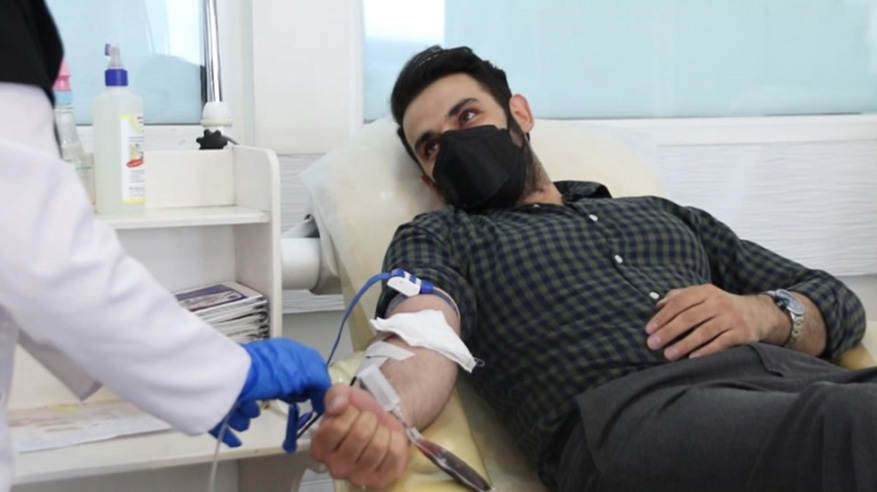
Sustainable Development Goal (SDG) target 8.3 is to “Achieve universal health coverage (UHC), including financial risk protection, access to quality essential health care services, and access to safe, effective, quality, and affordable essential medicines and vaccines for all. Delivering quality health services is a global imperative for universal health coverage and attract public support that contributes to governments providing sustained financing and results in better health outcomes. Poor quality health services result in negative patient experiences and damage to human health.
For quality to be achieved in health care settings, health care delivery has to ensure:
safety
effectiveness
person centredness
timeliness
efficiency and
equity.
Health services must also be integrated and coordinated across the different levels of the health care system to provide a full range of quality health services throughout the life course.
Ensuring high quality in health care is a challenge on the global stage facing health systems regardless of their developmental status. Nevertheless, low- and middle-income countries, countries of transitional economies and fragile, conflict-affected and vulnerable settings face additional hurdles of health system breakdown, inadequate infrastructure, lack of safety and security, and a scarcity of requisite resources. These hurdles demote quality provision and may falsely render it as a “not-now” priority, yet in fact, it is more greatly needed in these situations to prevent negative health outcomes.
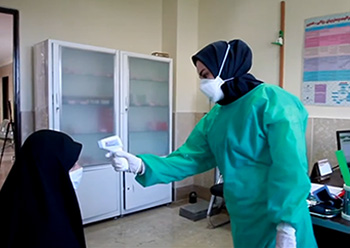 Patient safety is a fundamental principle and a key domain of quality health care. It is an essential requirement for establishing resilient health care systems. The discipline of patient safety is the coordinated efforts to prevent harm, caused by the process of health care itself; it emphasizes preventing, reducing, reporting and analysing patient harm and adverse events.
Patient safety is a fundamental principle and a key domain of quality health care. It is an essential requirement for establishing resilient health care systems. The discipline of patient safety is the coordinated efforts to prevent harm, caused by the process of health care itself; it emphasizes preventing, reducing, reporting and analysing patient harm and adverse events.
Patient safety was highlighted by the Seventy-second World Health Assembly in resolution WHA72.6 on Global action on patient safety in May 2019, which endorsed the establishment of an annual World Patient Safety Day, to be observed globally on 17 September.
Unexpected events can take place in any setting where health care is delivered, whether it is primary or tertiary care, urban or rural care, public or private care, acute or chronic care. Even though health care has become more effective, it has also become more complex, with greater use of new technologies, medicines and treatments. As economic pressure is very high and the environment is unsteady, health systems need to be better defined and strengthened.
Patient harm in health settings occurs when people receive non-evidence-based care, which could be delayed, inefficient, inequitable, of poor quality and cause financial burden for patients and their families. Unsafe care does not only negatively affect the patient directly but also drains resources, diminishes the population’s trust in the health system and hinders progress towards UHC at national, regional and global levels.
Patient safety data are progressively emerging through research from developing and developed countries and there is a slow but steady increase in the level of awareness of the risk of unsafe health care among policy-makers and practitioners.
The regional WHO patient safety programme aims to:
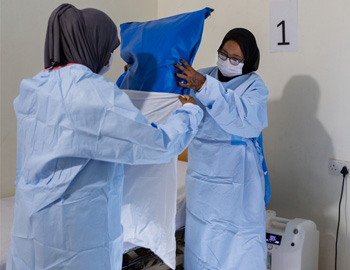 raise awareness of health care providers, policy-makers, academic institutions and the public on the concept of patient safety;
raise awareness of health care providers, policy-makers, academic institutions and the public on the concept of patient safety;
empower and inform patients to manage their health rights and needs;
provide tools to assist health care institutions to develop, implement, sustain and monitor patient safety programmes;
provide training and national capacity-building for health care providers on patient safety and related concepts;
share information and collaborate with regional and international organizations.
The goals of the programme are the development of patient safety policy and implementation of a patient safety programme through a set of actions aligned with the WHO Global Action on Patient Safety, that aim to:
reduce adverse events in health care settings;
prevent death and disability caused by health care delivery;
reduce health care costs;
strengthen credibility and promote trust between patients and healthcare providers;
build confidence in health services.
High-quality primary health care (PHC) has a fundamental role in ensuring that health systems are able to achieve the Universal Health Coverage (UHC) agenda. A strong PHC system is essential to address the increasing burden of diseases and associated risks within the Region. However, a review of quality of care has found major gaps in the way health care is delivered impacting on patient satisfaction and health outcomes. Facing these challenges, the WHO Regional Office, while working with regional stakeholders and global experts, took the initiative to develop a framework and tools for monitoring the quality of PHC in countries of the Region.
A set of 34 PHC quality indicators was developed and pilot tested showing high feasibility, practicality and sustainability. The tool has come a long way from literature review, expert consultations, Delphi survey, pilot field test in 40 facilities in the region and a final consultation in May 2016. The core quality indicators are highly adaptable to different local and regional contexts. They reflected regional priorities and evidence from other regional quality initiatives expanding existing measurement to include provider competency, patient reported experiences and safety.
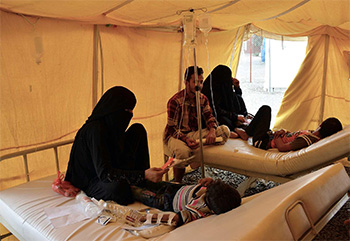 Fragile, conflict-affected, and vulnerable settings create chaotic and uncertain environments, or settings of extreme adversity. Whether acute or protracted, they weaken health systems and can lead to complete capacity failure. Addressing health care quality in these settings is often relegated to “not now” status, with priority being given to simply providing access to care. However, this approach is misguided; given how vulnerable people are in these settings providing them with high-quality care is arguably more important than anywhere else, especially that they affect a large proportion of people, many of whom are women and children.
Fragile, conflict-affected, and vulnerable settings create chaotic and uncertain environments, or settings of extreme adversity. Whether acute or protracted, they weaken health systems and can lead to complete capacity failure. Addressing health care quality in these settings is often relegated to “not now” status, with priority being given to simply providing access to care. However, this approach is misguided; given how vulnerable people are in these settings providing them with high-quality care is arguably more important than anywhere else, especially that they affect a large proportion of people, many of whom are women and children.
WHO has developed an action framework to ensure quality in extreme adversity situations. The framework reports 5 main goals to address quality and safety to: ensure access and basic infrastructure; shape the system environment; reduce avoidable harm; improve frontline clinical care; and engage and empower patient, families, and communities.
Quality of care in fragile, conflict-affected and vulnerable settings

A regional guidance document is being developed to propose measures to support the dual role of PHC in maintaining quality services while also participating in the direct pandemic response. It builds on existing work in providing quality care in extreme adversity settings.
Patient Safety Friendly Hospital Framework

In response to the immense need to improve actions and address gaps in patient safety practices a patient safety friendly hospital framework has been developed, in line with the goals of Vision 2023. It presents a comprehensive set of evidence-based patient safety standards to which hospitals should adhere to ensure the provision of safer care. Compliance with these standards would ensure that patient safety is accorded the highest priority and that hospitals implement best practice.
The framework covers: leadership and management; patient and public involvement; safe evidence-based clinical practice; safe environments; and lifelong learning. It assesses hospital performance from a patient safety perspective, aims to build staff capacity in patient safety and actively engage patients and communities in improving health care.
As of 2016, 15 Member States were implementing the framework in more than 250 hospitals: Afghanistan, Egypt, Iraq, Islamic Republic of Iran, Jordan, Libya, Morocco, Oman, Qatar (private hospitals), Palestine, Pakistan, Sudan, Syria, Tunisia and Yemen.
The information on the standards is collected on a continuous basis and reflects current health care practice and the best practice evidence-based interventions. Continuous revisions and updates are introduced regularly. Patient safety standards should be adopted and institutionalized within health care systems in all countries of the Region.
Introducing the Patient Safety Friendly Hospital Framework
Patient safety assessment manual (Third edition)
Patient safety assessment manual (Second edition)
Patient safety friendly primary health care
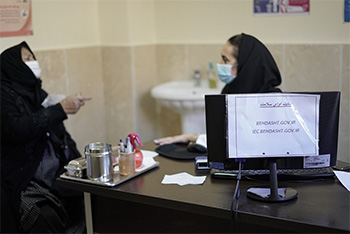 In order to prioritize patient safety as a means to improving the overall quality and safety of health care in the Region, innovative approaches are needed that are not just limited to hospital care but stretch across the continuum of care, including PHC.
In order to prioritize patient safety as a means to improving the overall quality and safety of health care in the Region, innovative approaches are needed that are not just limited to hospital care but stretch across the continuum of care, including PHC.
Building on the success of WHO’s Patient Safety Friendly Hospital Framework and Astana Declaration in 2018: “Primary health care and health services that are high quality, safe, comprehensive, integrated, accessible, available and affordable for everyone and everywhere, provided with compassion, respect and dignity by health professionals who are well-trained, skilled, motivated and committed”, standards for patient safety friendly primary care have been developed by the Regional Office.
The standards provide a framework through which primary care facilities will be able to deliver safer patient care, assess performance from a patient safety perspective, build staff capacity in patient safety, and actively engage patients and communities in improving health care.
The Patient Safety Friendly Primary Care Standards will improve patient safety in both in public and private PHC facilities and provide support to ministries of health, as well as independent organizations and professional bodies, in building technical capacity in PHC. Currently, the standards are being piloted in Islamic Republic of Iran, Oman and Pakistan.
Key performance indicators for health and care worker safety
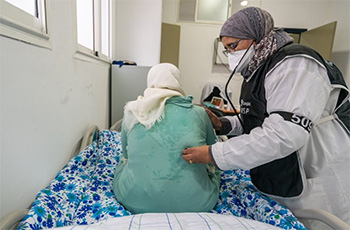 Patient safety is inseparable from the safety of health care workers and providers. Health care workers face risks of infection, violence and mental health challenges, highlighted in the COVID-19 pandemic.
Patient safety is inseparable from the safety of health care workers and providers. Health care workers face risks of infection, violence and mental health challenges, highlighted in the COVID-19 pandemic.
The WHO Regional Office is developing a set of safety indicators to assess, monitor and ensure safety of health care workers as part of the overarching theme of patient safety.
Charter: health worker safety: a priority for patient safety
Facts
Every year, nearly 10% of all hospital admissions globally might lead to harm for patients, related to health care services provided. It is estimated that almost 42.1 million hospital admissions are associated with adverse events, every year.
Unsafe health care services still lead to 134 million adverse events annually in low- and middle-income countries, accounting for nearly 2.6 million deaths.
In the Eastern Mediterranean region, the adverse event rate ranges from 2.5% to 18.4% per country, with high preventability rate of 83%.
The most common types of adverse events were caused by operative errors, hospital acquired infections and medication errors (34.9%, 30.3% and 18.2%, respectively).








